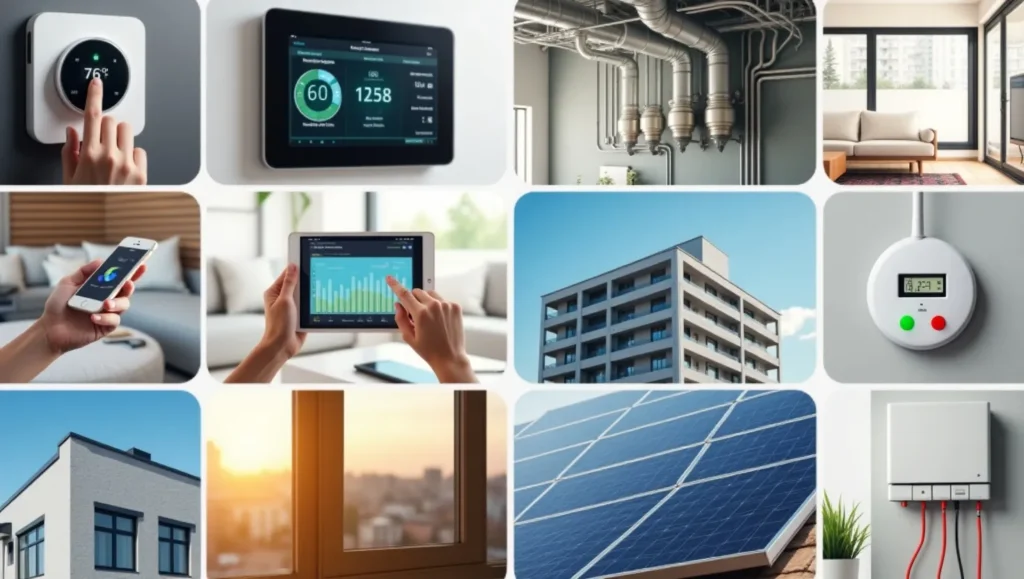The Problem: Rising Energy Costs and Waste
The cost of energy is rising steadily. Because of growing utility costs and the increasing demand on our natural resources, there is a greater need than ever for more intelligent energy use. Whether you are trying to lower your carbon footprint, manage a business, or maintain your home, wasteful energy use has a negative impact on both the environment and your pocketbook.
The International Energy Agency (IEA) estimates that buildings use almost 30% of the energy used worldwide. That is not just electricity used for lighting or computers. Heating, ventilation, and poorly optimized appliances all contribute to energy waste. Many businesses and households continue to use antiquated systems that waste money and energy.
The Agitation: Why Ignoring Efficiency Is Costing You More Than Money
Most people are aware that conserving energy can be achieved by lowering the thermostat or turning off lights. However, those are merely superficial adjustments. The larger problem is underneath—in the energy-leaking structures, the antiquated appliances, and the ineffective industrial processes that run constantly.
- Every year, inefficient HVAC systems and inadequate insulation cost businesses thousands of dollars.
- Homeowners frequently fail to account for the total cost of outdated appliances and inefficient lighting.
- Small energy-saving changes can lower utility bills by as much as 25–30%, according to Energy Efficiency Companies.
Although there is technology to address these problems, many people are prevented from improving it due to a lack of knowledge and upfront cost concerns.
The Solution: Energy Efficiency Technologies That Actually Work
The good news is that there are tried-and-true solutions available right now, and they are easier to get.

You can lower expenses, lower emissions, and use energy more wisely by concentrating on energy efficiency improvements and implementing the appropriate technologies.
1. Smart Thermostats and Building Automation
Smart thermostats that use artificial intelligence (AI) to learn your preferences and make automatic heating and cooling adjustments include the Google Nest and Ecobee. In commercial buildings, automated systems can optimize energy use by regulating HVAC, lighting, and security based on occupancy.
Case Study – Empire State Building, USA
An extensive retrofit was performed on the famous skyscraper, incorporating upgrades to the window insulation and smart HVAC systems. Energy consumption was reduced by 38% as a result, saving over $4 million annually.
2. LED Lighting and Smart Controls
75% less energy is used for lighting when LEDs are used instead of incandescent bulbs. When occupancy sensors and daylight harvesting systems are included, the savings significantly rise.
Energy Efficiency Tip: The quickest return on investment and the most straightforward solution is lighting.
3. High-Efficiency HVAC Systems
Variable-speed compressors and sophisticated sensors are used by more recent HVAC systems to more precisely adjust to indoor conditions. Along with saving energy, these systems also enhance comfort and air quality.
The Green Building Initiative of the Dubai Municipality: A Case Study
Dubai demonstrated that government initiatives can set an example by achieving an average 33% energy savings across public buildings through sophisticated HVAC retrofits and energy-efficient design.
4. Energy Monitoring Systems
You can see exactly where your energy is going with real-time energy monitoring tools. Commercial-grade products like Schneider Electric’s EcoStruxure and platforms like Sense and Wiser assist in identifying energy waste and provide data-driven energy efficiency advice.
5. High-Performance Windows and Insulation
When it comes to energy efficiency, high-performance windows and insulation are often overlooked. Modern materials lessen the need for heating or cooling systems by assisting in the maintenance of indoor temperatures.
Energy Efficiency Tip: If, in spite of your best efforts, your building feels drafty or overheated, insulation may be the missing piece.
6. Solar Panels and Battery Storage
In order to increase efficiency and decrease reliance on the grid, homes and businesses can store excess energy and use it when needed thanks to technologies like solar panels and battery storage.
Case Study – IKEA Stores Worldwide
Numerous IKEA locations have solar energy systems installed. The company has saved millions on energy bills and drastically decreased its carbon footprint by combining automated energy management and LED retrofits.
7. Stop Phantom Loads, Save Energy Effortlessly
Phantom loads quietly consume energy even when the devices are not in use. This hidden drain is eliminated when electronics are connected to smart plugs or cutting-edge power strips. It is among the most straightforward and low-effort methods to increase energy efficiency.
Choosing the Right Energy Efficiency Products
When choosing technologies, keep the following in mind:
- Verified performance: Certifications like ENERGY STAR indicate genuine efficiency.
- Scalable solutions: Select goods that can adapt to your changing needs.
- Support from energy efficiency companies: Companies that specialize in offering customized solutions for homes, workplaces, and large industrial setups include Siemens, Honeywell, and Johnson Controls.
Final Thoughts
Rather than being optional, investments in energy efficiency technologies are now required. I became aware of the need for my own energy when I observed the electricity waste in my own house. Energy conservation, in my opinion, is a sign of wisdom since it conserves time and resources.
Posted by Abu Talha
With a background in science at the A-level, Abu Talha has studied subjects including physics, chemistry, mathematics, and biology. Along with his more than 1.5 years of experience in digital marketing, he is passionate about writing about electric vehicles, sustainable energy, and how emerging technologies are influencing the future.
